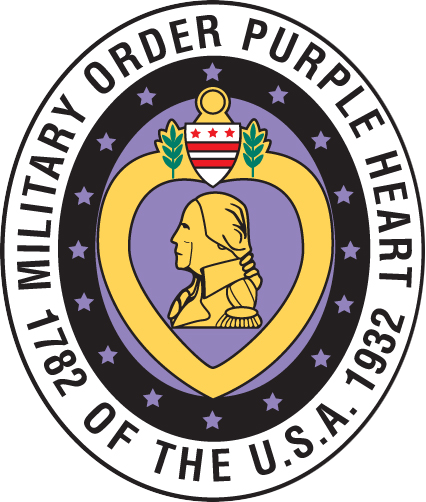Scott Garrett was born in Macon, Georgia in 1970. When he was a small child his family moved to Pensacola, Florida and he grew up there and attended public schools. He graduated from Washington High School with the Class of 1989, and went on to attend Florida State University until 1992. He then was employed by GEICO Insurance for a number of years, but got to doing some serious thinking about career choices. Scott was attracted to the military, in part by the experiences of his father and grandfather both of whom had served as NCOs in the Air Force. He enlisted in the Army.
It took some doing, Scott is a big man, six foot six, and that required waivers, but he entered service February 13, 2001. Later, when he had advanced in rank he quite understandably acquired the nickname, big sarge.
He went through basic training at Fort Knox, Kentucky and advanced individual training at Fort Lee, Virginia. In September 2001 he arrived at Fort Hood, Texas and was assigned to 2nd Battalion, 7th Cavalry, 1st Cavalry Division.
The 1st Cavalry Division was deployed to Iraq for Operation Iraqi Freedom II. Scott and Company B, 2-7 Cavalry made the move in March 2004. They staged through Kuwait, spending a few days at Camp New York, then made the two-day road convoy into Iraq and finally arrived at their new home base, Camp Cooke, north of Baghdad on the Tigris River. They engaged in a variety of missions that were either humanitarian support for the local populace, or combat type operations to track down and eliminate terrorists or any other anti-coalition forces in their area of operations.
About the time of the 1st Cavalry Divisions arrival in 2004, the anti-American Shiite cleric, Muqtada al-Sadr was creating great difficulties with his al-Mahdi Army, particularly in Basra and Sadr City. In July, Scotts battalion was sent to Camp Duke, the Marine Corps Forward Operating Base on the outskirts of Sadr City and placed in support of the 1st Marine Division. By this time, al-Sadr was doing his worst against the government and especially against U.S. troops and as a result, all the missions were tactical combat type operations. After several weeks, Scotts unit was sent to Camp David, a smaller base set up on the site of a college where they were subjected to daily demonstrations by hostile Shiite protesters.
By September, Scott Garrett was part of a small element that had returned to Camp Cooke to support Army units there, although the main part of the cavalry battalion remained at the forward operating bases in support of the 1st Marine Division. He was wounded when on an operational mission from Camp Cooke.On September 5, 2004 Scott Garrett was driving an up-armored HUMMV gun truck, part of the security element for a team that had been sent to recover a disabled vehicle from just beyond a village that was on the road a few miles from Camp Cooke. The M-88 track recovery vehicle had secured the disabled vehicle and the little convoy started on its way back to base. As they entered the village on the return trip, Scotts HUMMV was hit by an Improvised Explosive Device (IED). Only the lieutenant in the vehicle, on the side away from the blast, was uninjured. The gunner lost an arm and Scott was also badly wounded, although he was unconscious at the time and can only relate what he was told about it later.
When he first regained consciousness, he was in the hospital in Balad with badly damaged vertebrae in his neck and back and with traumatic brain injury. Within hours he was on a medevac plane to Landstuhl Regional Medical Center in Germany. From there he was sent to Walter Reed Army Medical Center in Washington, D.C.
After their long flight home from Europe, Scott says the planeload of casualties was quiet and subdued, but then they were met by a group of local ladies. Those women greeted each one of them with a hug and thanks for serving in the military, and with a little personal lap quilt. It was unexpected and was a very moving experience, lifting the spirits of everyone. Scott remembers that as a tremendously good thing those ladies were doing for the wounded returnees and says he will keep that lap quilt forever as part of that treasured memory.
A month and a half after being wounded in Iraq, Scott had undergone treatment while being moved through Balad, Landstuhl, and Walter Reed, and was in rehab and therapy at Darnell Army Medical Center back at his home station at Fort Hood, Texas. By late January 2005, he was an outpatient sent back to limited duty.
The Central Texas Chapter 1876 made contact with him, as they try to do with all the returning combat wounded soldiers at Fort Hood, and Scott signed up. When the Purple Heart Monument was to be dedicated at the Central Texas Veterans Cemetery in June 2005, Chapter Commander, Marty Martinez, asked Patriot Scott Garrett to share in the duties of unveiling the stone and Scott was proud to have been so honored.
At best, Scott could handle paperwork at a desk job, however, with several crushed vertebrates his disabilities were permanent and it was obvious that he would never again be able to resume an active soldiers life. A medical board ruled on his case and he was discharged from the Army in January 2006.
In recent months Scott took employment in the local area and then moved his family here. He transferred his membership in the Military Order of the Purple Heart to Chapter 1919 in January of this year, and this month PATRIOT BULLETIN proudly salutes Patriot Scott Big Sarge Garrett.
